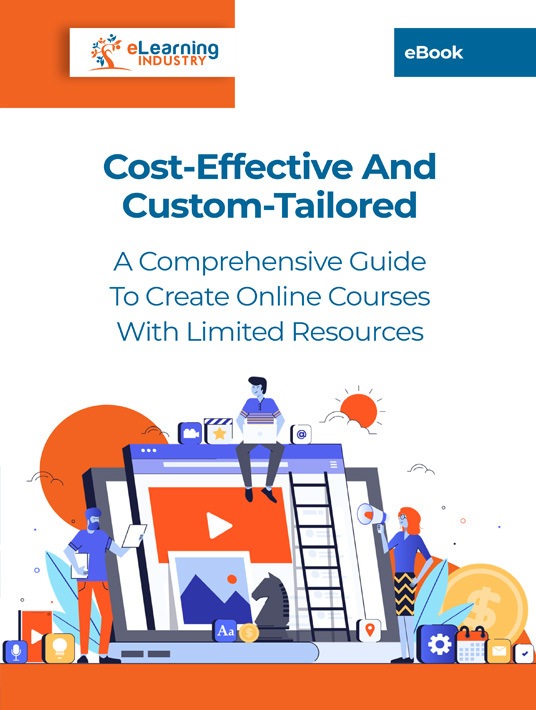Tips For Creating Online Courses For Busy Employees
Some people don’t have a moment to spare. Work obligations and personal commitments just keep piling up. This means that online training is usually the last item on their list—if it even makes the cut. That said, these on-the-go learners know they still need to build vital skills and expand their knowledge. Thus, they need to find an eLearning course that respects their time and gives them anytime, anywhere access. Here are 7 design principles to bear in mind when you create eLearning courses for busy professionals.

1. All Content Must Pass The R&R Test
No, I’m not referring to the more popular R&R (rest and relaxation). But busy professionals probably need a healthy dose of that too. In this case, I’m talking about relevancy and redundancy. Every piece of content you include in your online course design must offer your learners real-world value based on their specific online training needs. It must also give them new information instead of covering the basics. Who has time to sit through a 20-minute course that covers ideas they already know without expanding on the concepts? Definitely not busy professionals.
2. Simple And Straightforward Leads To Knowledge Absorption
The simple and straightforward design principle applies to every aspect of online course creation, from the layout to the text blocks. When you develop eLearning courses for busy learners, keep things concise and to-the-point. Start with the crucial information they need to know. Then explore the subject matter in greater detail for those who have the time to do so. You should also incorporate checklists, eLearning infographics, and other visual aids to help them absorb the takeaways more quickly.
3. Guide Their Attention (They Don’t Have Time To Scour And Scan)
Focal points are a vital component of eLearning design. Your learners need to know where to look and why. For example, use bold fonts and headers to tell them that they need to concentrate on the text block. You should also place the most important elements at the top of the screen so that they stand out. If there’s a tip, fact, or stat they need to remember, frame it so that they understand its relevance. In addition, don’t be afraid of white space. Cluttered designs often confuse learners as they don’t know where to look. All the elements compete for their attention instead of guiding them in the right direction.
4. Keep Navigation Familiar And Focused
Learners aren’t able to figure out brand new navigation icons or layouts. Familiarity keeps them focused on the task at hand and makes information more accessible. They can spend their time learning new concepts or building their skills instead of trying to find out how to get to the next activity or dealing with hidden links. You should also clearly mark all buttons, so they know where they lead them and if they tie into their specific online training needs.
5. Real-World Value Takes Precedence Over Aesthetics
Sure, busy professionals still look for online courses that please the eye. Multisensory experiences are even better. However, that should not come at the cost of real-world value. Practical application takes precedence over aesthetics. Every image and graphic you include must help them better understand the topic and use it in the real world. For example, the demo video is full of dazzling colors and images. But does it really help them apply what they’ve learned on the job to improve productivity?
6. Organize Content In Bite-Sized Chunks
Break your content into bite-sized chunks and follow the rules or proximity. Items that are grouped together usually have a connection. If you place unrelated ideas and concepts in close proximity, learners’ minds will naturally assume they’re tied together. Bite-sized chunks also help busy professionals assimilate the information more effectively since they are able to absorb one group before moving on to the next.
7. Personalize The Experience To Enhance Meaning
Personalization is one of the most crucial design principles to keep in mind when you create eLearning courses for busy professionals as it underlies everything you do, from the navigation icons you choose to the activities you develop. Include their personal interests and goals so that they can find meaning in the online training experience. They’re more likely to participate and fully engage with the course if they know it’s made for them instead of trying to give them a generic online course that barely brushes the surface and leaves them wanting more. Pre-assess to identify their wants and needs. Then custom-tailor your design to make it purposeful.
Insider Tip: Know Their Needs In Order To Live Up To Expectations
Learn as much as you can about what information your busy professionals are looking for and how they prefer to receive it. You should also conduct surveys to identify gaps. Lastly, use a micro-approach whenever possible without making the experience seem fragmented or incomplete. For example, instead of creating a half-hour online course that delves into every aspect of company policy, develop quickly consumable podcasts, simulations, and online training tutorials. Every activity gives them a piece of the puzzle while still serving as an individual learning unit.
Many busy professionals can’t even fit a decent lunch into their agenda. However, they will make time for a relevant online course that helps them seize new opportunities. These design principles ensure that you create eLearning courses for busy professionals that are quick to consume and wholly engaging. Familiar navigation icons, clutter-free layouts, bite-sized information chunks, and personalization make it easy to absorb the takeaways.
Get our eBook Cost-Effective And Custom-Tailored: A Comprehensive Guide To Create Online Courses With Limited Resources to discover how you can create online courses with minimal experience. It features tips to find the right eLearning authoring tool and LMS, as well as vital talents you need to design meaningful eLearning courses for your target audience.

